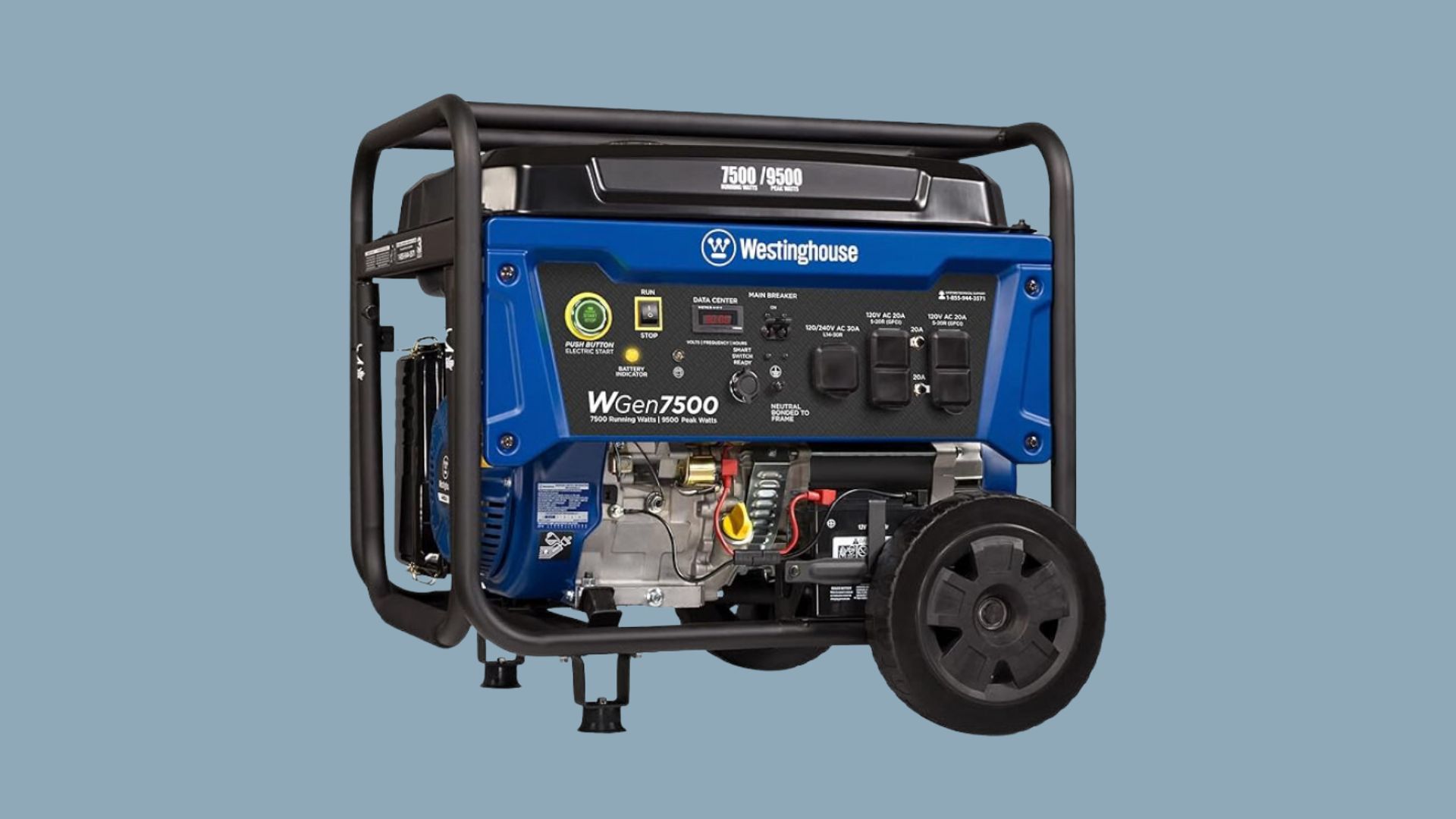Wondering what size generator do I need for a bounce house? This guide will help you determine the right size to keep your bounce house inflated and your event running smoothly. We’ll explain bounce house power requirements, provide example calculations, and help you avoid common pitfalls.
Key Takeaways
- Choosing the right generator involves calculating both running and surge watts to ensure it can handle the power needs of the bounce house.
- Different sizes of bounce houses have varying power requirements, with small models needing around 800 watts and large models potentially requiring up to 4,000 watts.
- Operational costs and fuel efficiency are critical considerations, as a 2,000-watt generator typically consumes around 0.34 gallons of fuel per hour, affecting budget planning for events.
Calculating Generator Size for Your Bounce House
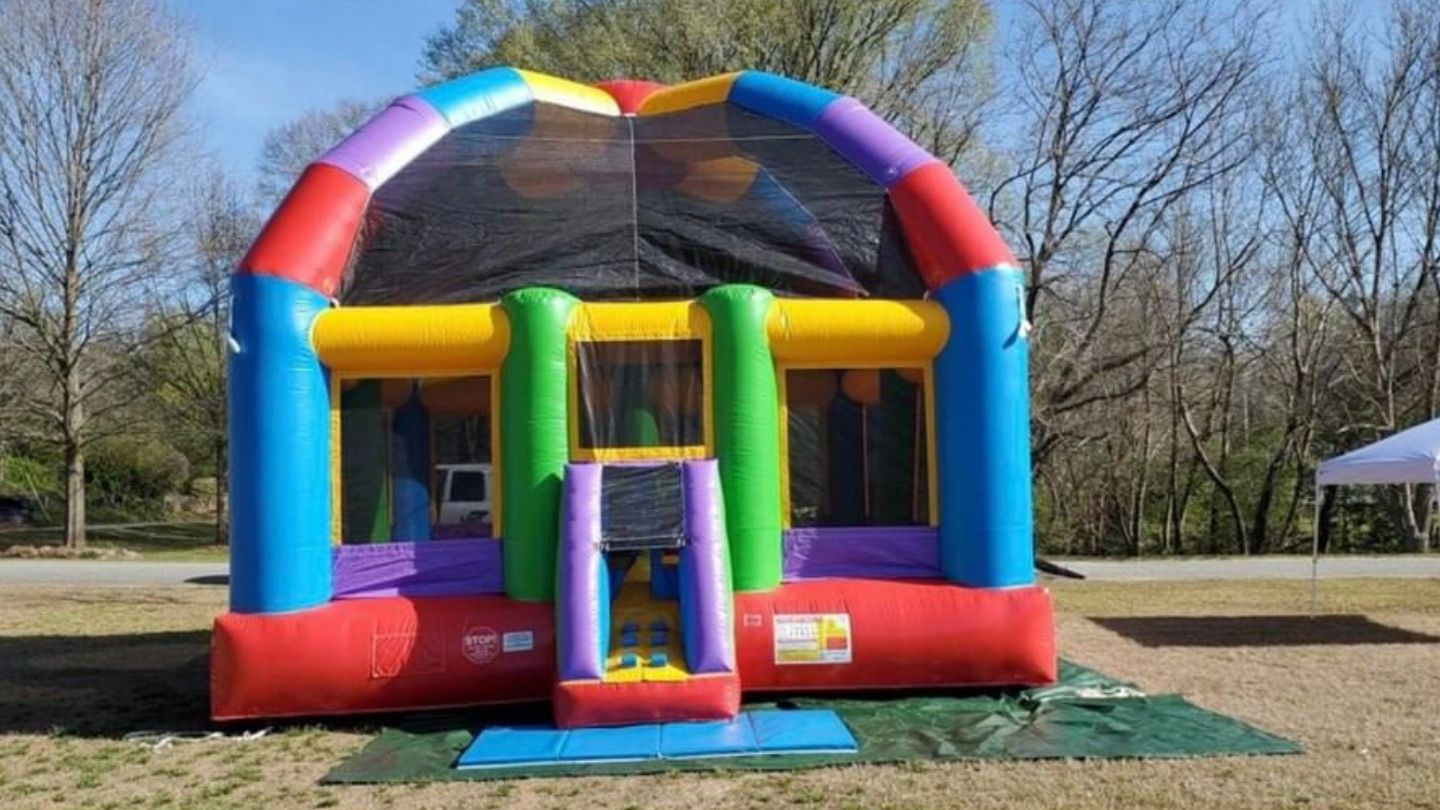
Efficiently operating a bounce house necessitates calculating the generator power required, especially when there is no accessible electrical outlet within a 50-foot radius. It’s essential to be well-informed about the power requirements of a bounce house, which typically requires at least 2,000 watts for the operation of an average-sized blower. Insufficiently powered generators may cause disruptions and could even harm the equipment due to power deficits.
To avoid overburdening your generator, it’s vital to sum up the total wattage demand from all devices that will be connected. Before powering up the generator, ensure all appliances are switched off. Then, reconnect them progressively for optimal functionality. Even distribution across various cords and apparatuses also enhances performance and prevents straining any single source.
Lastly, grasping both running (continuous) watts and surge (peak) watts is crucial in meeting your bounce house’s energy demands accurately without exceeding the capabilities of your chosen generator.
Understanding Running Watts and Surge Watts
Continuous power, also known as running watts, is the consistent level of power required to maintain a device’s function. On the other hand, surge watts or starting watts refer to the additional temporary burst of power needed when initiating electric motors. Take, for instance, a medium-sized bounce house, which typically employs a blower with a 1-kilowatt capacity. To calculate running watts accurately, multiply amps by volts; this simple equation confirms that your generator has sufficient continuous output capability for powering your bounce house blower.
Using a dedicated circuit is important for ensuring the generator can handle the power needs without overloading. Dedicated circuits ensure safe and reliable operation by preventing system overloads.
In order to properly equip yourself for hosting a bounce house event, it is essential to account both for its running and surge wattage requirements. You achieve an accurate total wattage requirement by adding together the individual running watts from all devices along with only the highest value among their respective surge wattages — doing so will guarantee that not just initial surges are accommodated but also seamless sustained performance from your chosen generator.
Example Calculation
To calculate the correct size of a generator for your bounce house, begin by tallying the continuous power needs. In this case, a small bounce house demands 800 running watts exclusively for its blower. Subsequently, incorporate the initial surge power requirement: combining 800 running watts with an extra 200 surge watts results in a total wattage demand of 1,000.
Should you be setting up a medium-sized bounce house necessitating 1,000 running watts and potentially an additional peak usage of up to 1,200 surge watts during start-up phases—you will require an energy source capable of providing at least 2,200 total watts to ensure seamless operation.
Employing this approach allows one to identify a suitable generator that is equipped to supply both ongoing and startup electrical requirements efficiently—ensuring uninterrupted fun on the bounce house.
Power Requirements for Different Bounce Houses
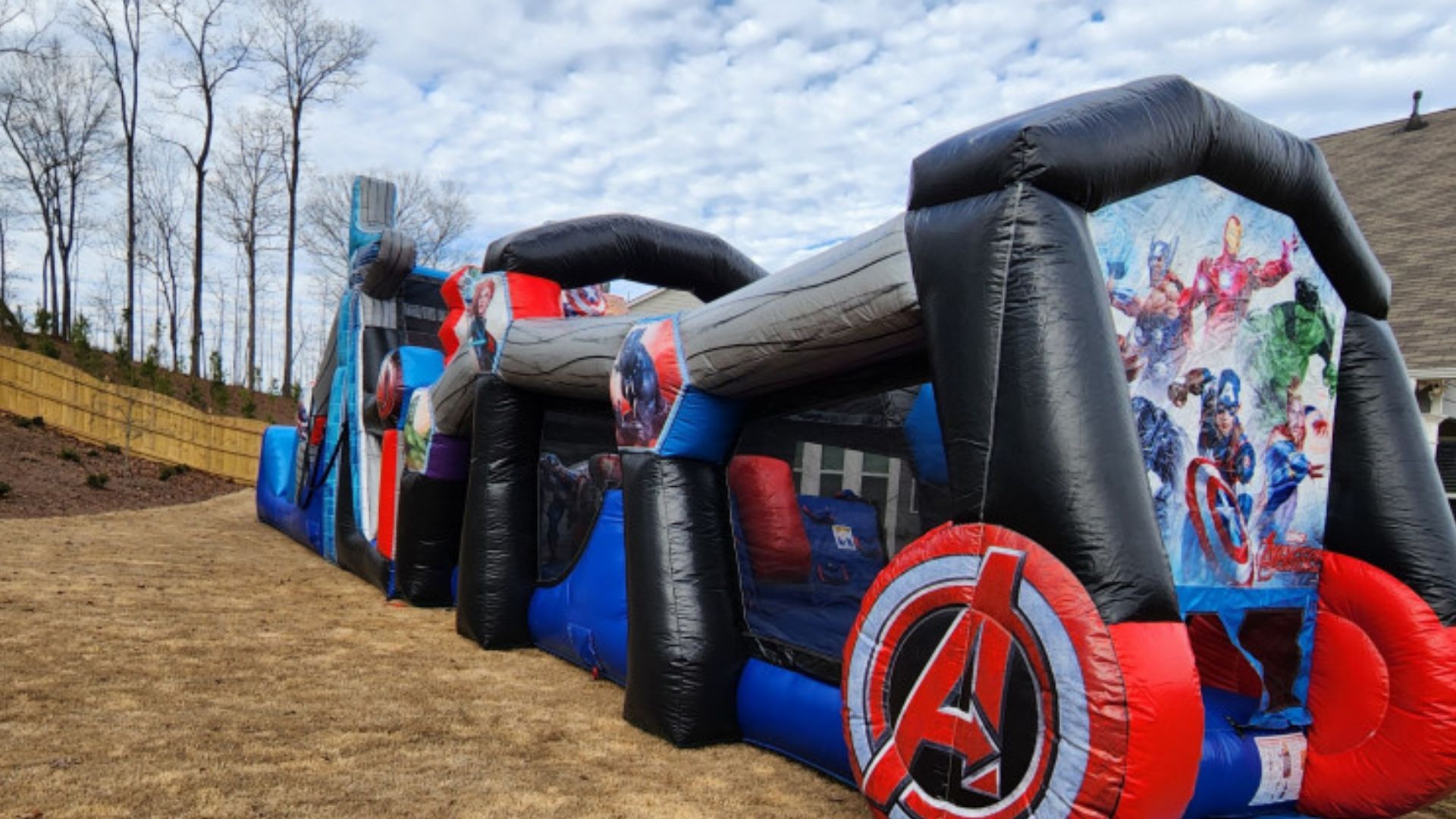
It’s essential to grasp the power demands of different bounce houses to ensure you select an appropriate generator. Understanding the power requirements is crucial to running a bounce house effectively. Small-sized bounce houses typically consume about 800 watts, but larger variants may need over 1,600 watts. Blowers for standard bounce houses usually require a power supply ranging from 1,000 to 1,500 watts. Those used in commercial settings can demand even higher wattages.
Securing a generator that not only powers the bounce house but also supports any additional electrical equipment is crucial. With portable generators offering capacities varying between 3,000 and 8,500 watts available on the market, they are capable of meeting the energy needs for most configurations involving bounce houses. A dedicated circuit with its own circuit breaker is recommended to prevent overloading and ensure safe operation.
Examining more closely, small-scale inflatables may have minimal requirements regarding electricity compared to medium or large-size structures, which necessitate greater amounts of power due to their size and complexity-related components such as blowers and other mechanisms necessary for operation.
Small Bounce Houses
To ensure smooth and uninterrupted operation, it’s important to choose a portable generator that can provide at least 800 watts of power for small bounce houses. This wattage requirement makes standard generators well-suited for powering these inflatable structures.
Medium Bounce Houses
Typically, medium-sized bounce houses necessitate a power supply exceeding 1,000 watts. The blowers used for these structures are commonly rated at 1 kilowatt or equivalent to 1,000 running watts. To determine the required running watts of blowers precisely, one can use the calculation: amps multiplied by volts equals running watts. This equation is vital in selecting a generator robust enough to consistently provide adequate power without complications.
For example, consider a blower for your medium bounce house that operates on ten amps and 120 volts. It would require an electrical output of 1,200 running watts (computed as ten amps x 120 volts). It is crucial to ensure that your generator has this capacity in order to maintain endless entertainment while also upholding safety standards.
Large Bounce Houses
Most large bounce houses necessitate at least a 2,000-watt power supply. The very largest models could require as much as 4,000 watts to function properly. Conventional generators are capable of keeping a large bounce house inflated for roughly an hour and a half on a full tank.
Take, for instance, a common generator rated at 2,000 watts with a fuel capacity of one gallon. It is expected to run close to one hour and twenty minutes. Ensuring you have access to generators that fulfill these minimum specifications will ensure your bounce house remains buoyant and provides endless entertainment.
Generator Runtime and Fuel Consumption
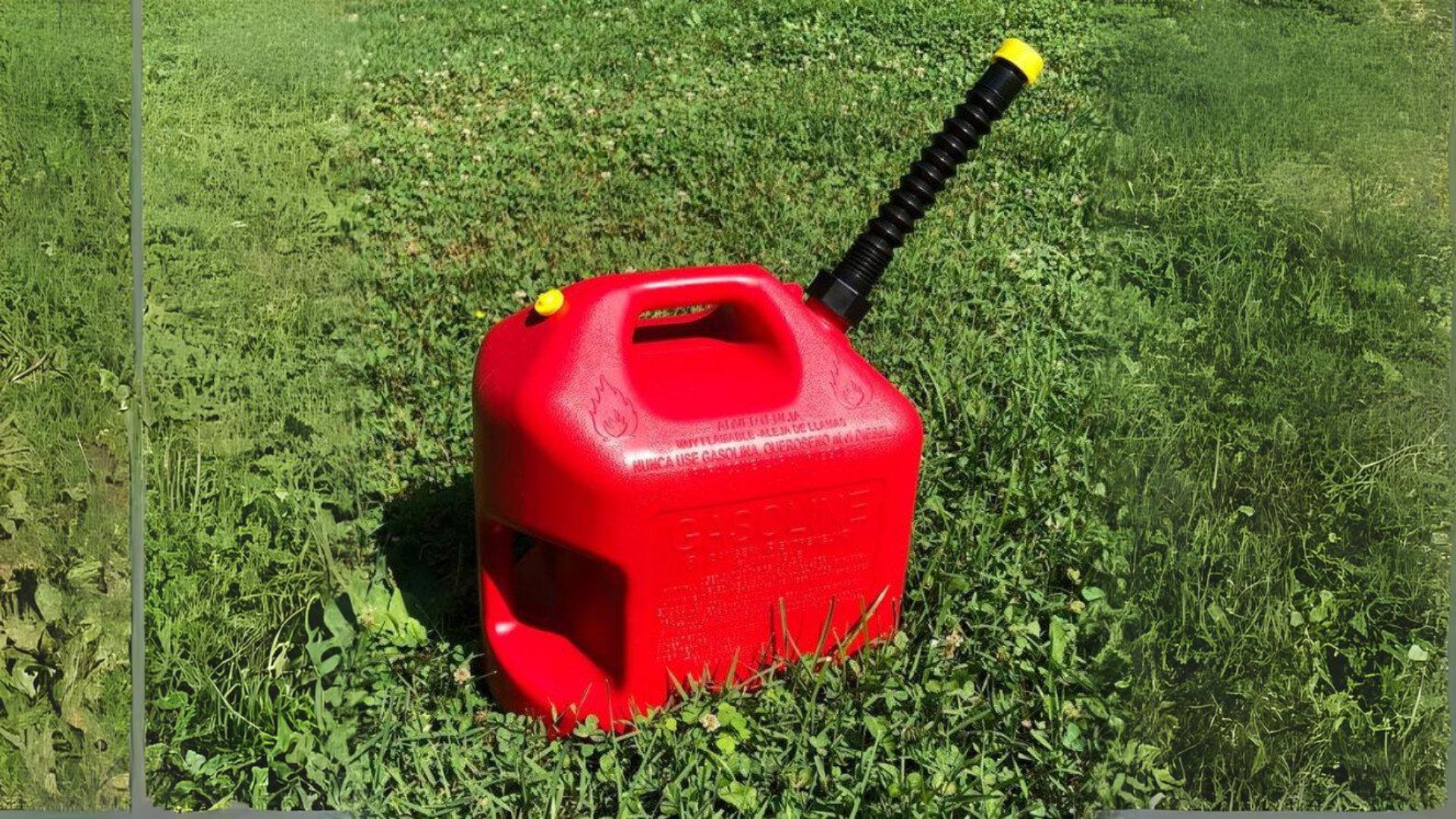
Understanding the runtime and fuel usage of a generator is crucial for maintaining an uninterrupted power supply during events. For example, operating a 2,000-watt generator could incur costs of approximately $4.70 to run for about 80 minutes. Being aware of these details is beneficial when planning and controlling the expenses involved with its operation.
On average, generators like the 2,000-watt model consume roughly three-quarters of a gallon per hour. This rate reflects standard fuel consumption for generators within this wattage category. Some generators can run for two to five hours, depending on usage and battery configuration. Calculating anticipated fuel expenditures in relation to both the wattage capacity of your generator and prevailing prices at the pump is important for devising an accurate budget while ensuring that your event proceeds without any power disruptions. It’s advisable to examine typical operational durations and energy efficiencies among such generators.
Average Runtime
Utilizing a standard generator, you can expect to keep a bounce house inflated for approximately an hour and a half when it is coupled with a medium-sized fan. Opting for a more robust generator could prolong the operational time of your bounce house to as much as six or seven hours, thanks to their enhanced capacity that allows them to handle longer use periods, particularly with smaller fans.
Should your event be brief in duration, employing a power station designed to last anywhere from two to five hours should suffice. Conversely, if your outdoor gathering will span several hours, selecting generators capable of running at half load for about seven hours or those equipped with Economy Mode—capable of extending operations up to 17 hours on just one tankful—are recommended options.
Fuel Efficiency
The efficiency of fuel usage is a key factor in determining the running costs associated with operating a generator. An average generator with a 2,000-watt capacity will use about three-quarters of a gallon of gasoline every hour. This consumption rate may differ slightly depending on the model’s unique efficiency characteristics and design.
Take, for instance, the Champion brand generator, which boasts a digital hybrid construction aimed at improving fuel economy over classic designs. Generators that are fitted with an Economy Mode have the added advantage. They fine-tune engine speeds to align with power demand. This feature proves especially valuable during extended periods of use.
Cost of Operating a Generator for a Bounce House
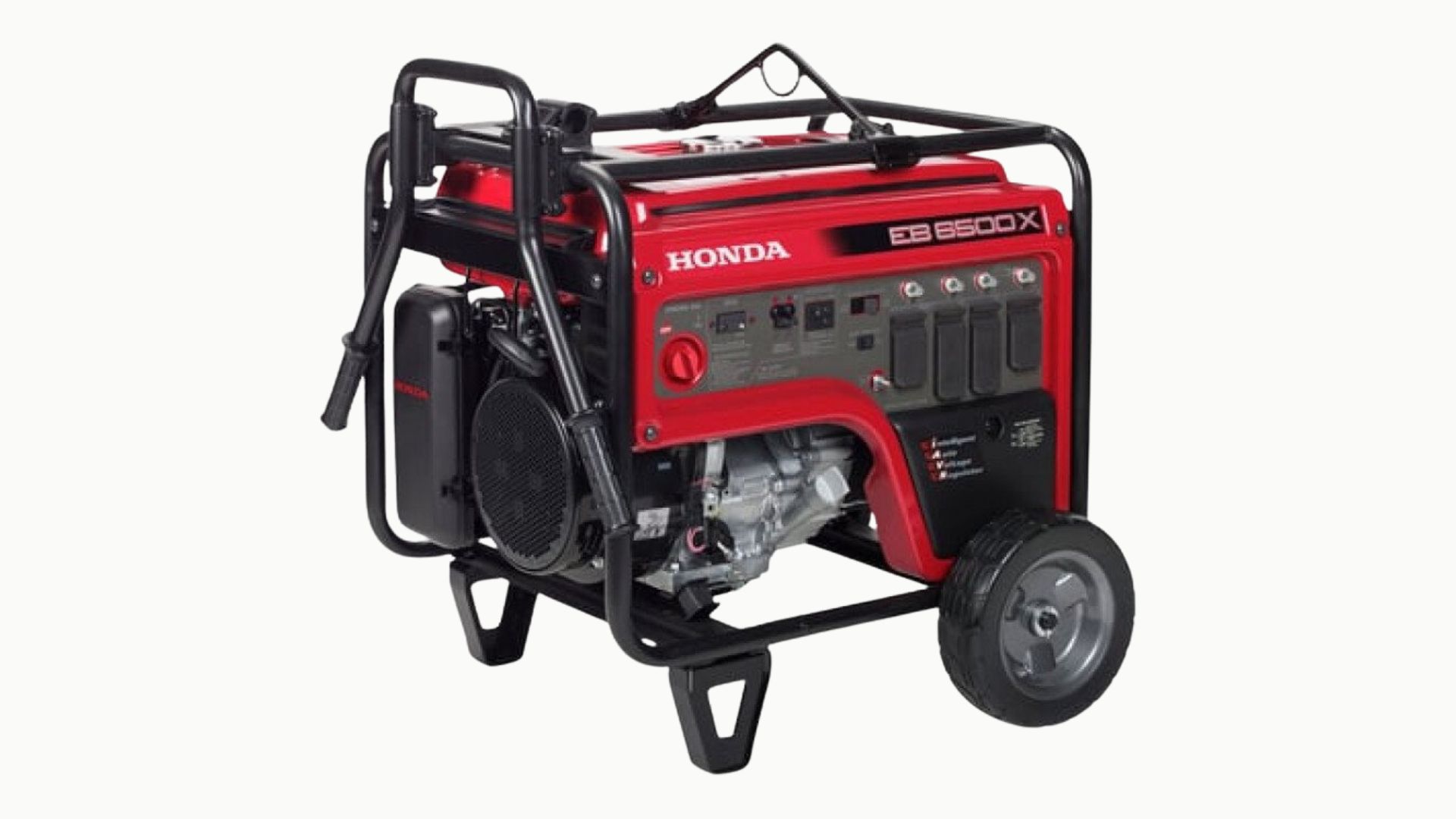
Running a bounce house requires the use of generators, which incur costs mainly due to fuel usage. On average, generators equipped with standard-sized fuel tanks are capable of powering a bounce house for about 1.5 hours. Nevertheless, if you utilize generators with larger fuel tanks and pair them with smaller blowers, they can operate for an extended period ranging between six to seven hours.
As the operation time of a generator increases, so does its fuel consumption, resulting in elevated operating expenses. Including these costs in your event budget will help ensure that there are no unexpected financial shocks during your event planning process.
Hourly Operating Costs
The expense of running a generator comes from the fuel it uses, and this cost can vary greatly depending on how efficient the generator is and the current price of fuel in your area. Take a 2,000-watt generator, for example. Its average fuel usage is around 0.34 gallons per hour. Since local fuel prices are subject to change, these should be taken into account when figuring out the overall cost of operating your generator.
When planning finances for an event that includes using a bounce house, you’ll need to budget carefully. If you’re running it for one hour and twenty minutes, expect to spend roughly $4.70 on fuel expenses. This estimate helps ensure you have enough money set aside specifically for this purpose.
Long-Term Considerations
Purchasing a generator that is more fuel-efficient can result in considerable savings on fuel, especially when it’s used often. Generators equipped with systems such as Eco-Throttle have the capacity to modulate their engine speeds based on the current load, which improves their fuel efficiency.
Savings over an extended period encompass not only diminished fuel usage but also decreased maintenance costs. High-efficiency generators typically necessitate less upkeep, thereby minimizing the cumulative expense associated with managing and maintaining a generator utilized for bounce house activities.
Choosing the Right Generator for Your Event
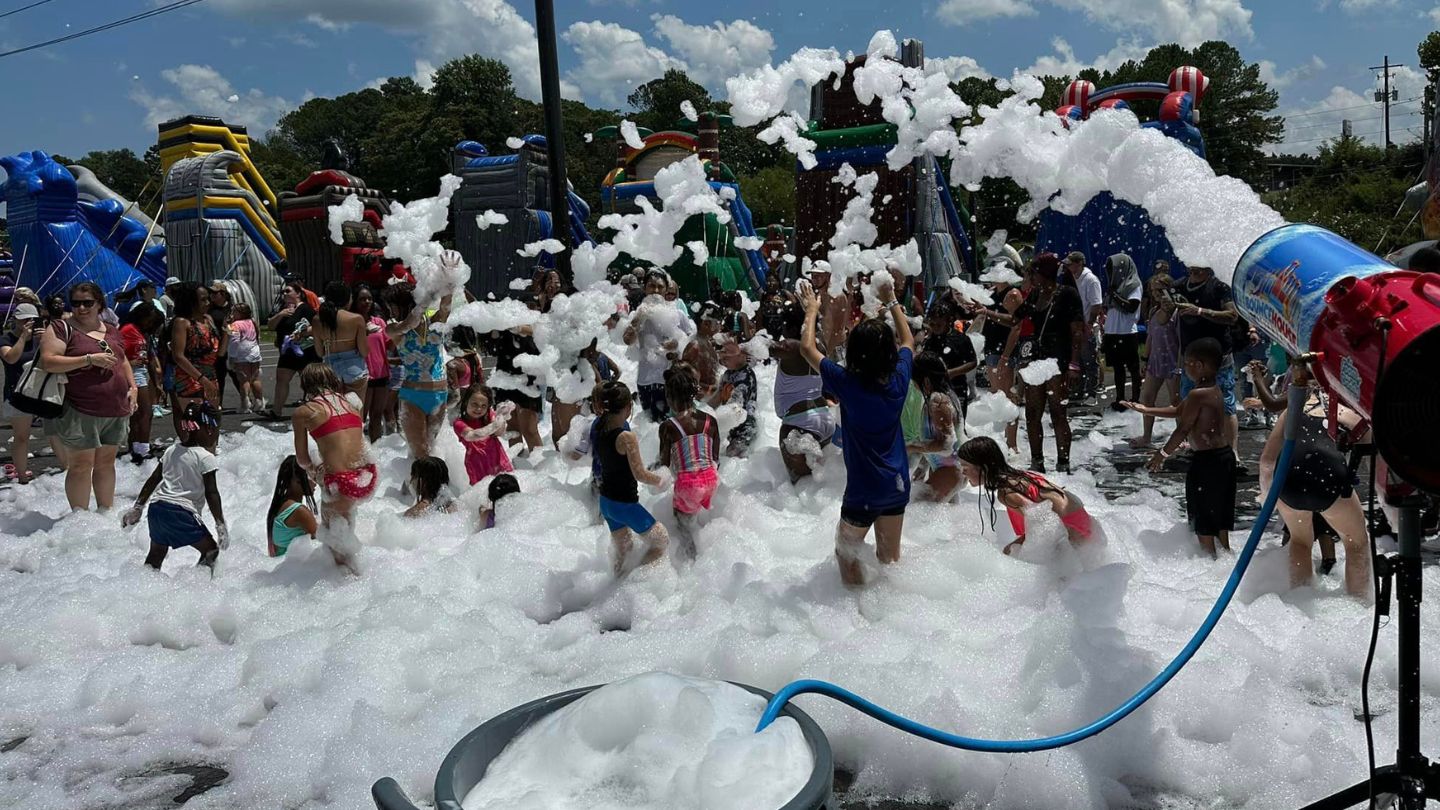
Ensuring that you pick an appropriate generator is crucial for a consistent power supply throughout your event. It’s important to take into account the particular requirements of your occasion, including how much power will be consumed and the duration it needs to run, in order to prevent any disruptions. Generators recommended for such tasks differ in their cost, capabilities, and attributes tailored specifically for running bounce houses. Alternatively, using a semi-dedicated electric outlet can be an option for powering a bounce house if a dedicated circuit is not available.
Making an informed choice regarding generators based on the demands of your event can help circumvent any functional problems while guaranteeing success. Crucial aspects that should influence this decision are the acceptable noise level produced by the generator, ease of transportation, and built-in safety measures designed to protect users.
Noise Level
Opting for a quieter generator can markedly improve the enjoyment of events, notably when children are involved. Quiet generators designed specifically for bounce houses typically run at lower decibels and are less disruptive. Models that operate within the 48 to 57-decibel range allow for operation in noise-sensitive areas without causing disturbances.
It’s essential to preserve a delightful ambiance during events with young attendees. A low-noise generator makes certain that the attention stays on the thrill and joy provided by the bounce house rather than being detracted by loud generator sounds.
Portability
Portable generators provide the advantage of being easy to move, which makes them perfect for various event arrangements. These generators are designed to be light and portable for straightforward relocation.
The ease with which these generators can be carried and installed renders them excellent for outdoor functions in diverse venues. They make sure that you have access to power wherever your needs may lie, from inflating a bounce house at home to powering equipment in a secluded park.
Safety Features
When using generators to supply power for bounce houses, it is imperative to consider safety measures that guard against risks, including exposure to carbon monoxide. It’s dangerous to refuel a generator while it’s operational, as this action may result in fires and additional hazards.
Generators such as the Ego Nexus Power Station elevate safety by offering recharging capabilities via traditional electrical sockets or solar panels. The integration of advanced safety features into these portable generators ensures a safer experience when powering your events.
Using Extension Cords Safely with Generators
It is crucial to use extension cords correctly to avoid electrical risks while operating generators. Employing safety measures such as a carbon monoxide detector can shield against dangers that might arise during generator usage. Ensuring the safe handling of extension cords is key to maintaining a secure environment for your bounce house activity.
Choosing the right cords and steering clear of overloading them are vital steps in this procedure. Grasping these elements guarantees that you are adequately equipped for your occasion.
Proper Cord Selection
It is crucial to use an extension cord with the proper gauge to avoid overheating and maintain safety during operation. Minimizing the length of your extension cords helps prevent voltage drop, which ensures that performance remains at its best. Using dedicated circuits for your electrical arrangements guarantees that the load will be managed without causing any overloads.
Choosing a suitable extension cord is vital not only for safeguarding against accidents but also for preserving the effectiveness of devices like the bounce house blower. To diminish risks associated with voltage drops and other dangers, refrain from using more extension cords than are absolutely necessary.
Avoiding Overload
Grasping the significance of electrical safety is essential when employing generators for energizing bounce houses. This knowledge safeguards against overloading, which not only can harm equipment but also pose risks such as an electrical fire. It’s important to balance power distribution among all devices linked to the generator in order to avert these dangers.
Employing extension cords that are appropriate in both gauge and length is crucial for maintaining safe and adequate power supply levels, which helps avoid instances of overload. By adopting this strategy, you ensure your event proceeds without any interruptions or electricity-related complications.
Bounce House Atlanta
At Bounce House Atlanta, we specialize in providing top-notch bounce house rentals and event services. Our mission is to bring joy and excitement to any event, whether it’s a birthday party, corporate gathering, or community festival. We offer a wide range of inflatable bounce houses, slides, and interactive games to ensure your event is memorable and fun for all ages. Our team is dedicated to delivering exceptional customer service, ensuring timely setup and takedown, and maintaining the highest safety standards. Trust Bounce House Atlanta to make your next event a smashing success!
Summary
Careful planning for a successful bounce house event involves assessing the proper generator size, understanding power demands, ensuring sufficient run time and fuel efficiency, and prioritizing safety measures. Knowledge of the specific power requirements of various bounce houses will lead to seamless enjoyment while safeguarding all attendees.
By choosing an energy-saving generator and utilizing extension cords in a secure manner, you can cut down on expenses related to operation while improving the event atmosphere. This guide has armed you with essential insights needed to make educated choices that guarantee a noteworthy gathering supported by dependable electricity access.
If you’re planning an event and looking for a bounce house in Marietta, consider Bounce House Atlanta for all your rental needs. Our extensive selection and commitment to quality ensure that your event will be a hit. Learn more about our services and book your bounce house today by visiting Bounce House in Marietta.
Frequently Asked Questions
What size generator do I need for a bounce house?
You will typically need a generator with at least 2,000 watts to power a bounce house effectively, as smaller models require around 800 watts, and larger ones can exceed 1,600 watts. Understanding what size generator do I need to run a bounce house is crucial for ensuring sufficient power. This ensures you have sufficient power for safe operation.
How do I calculate running watts for a bounce house blower?
To determine the continuous power needed to effectively operate a bounce house blower, you can use the equation running watts = amps multiplied by volts. This calculation will give you the running watts necessary for powering the blower.
Reading reviews about the rental company can also help you feel confident in your choice.
What are the hourly operating costs of running a generator for a bounce house?
The hourly operating cost of running a 2,000-watt generator for a bounce house is approximately $3.50, based on fuel efficiency and local fuel prices.
This can vary, so it’s advisable to calculate based on your specific conditions.
How important is the noise level of a generator for an event?
Ensuring a generator operates at a noise level between 48 and 57 decibels is crucial for maintaining a comfortable environment at events, especially those involving children.
Selecting quieter generators plays an essential role in keeping the event pleasant for everyone present.
What safety features should I look for in a generator for a bounce house?
Look for safety features such as carbon monoxide detectors and proper refueling practices in a generator for a bounce house.
Models like the Ego Nexus Power Station enhance safety with options for recharging through standard outlets or solar panels.

